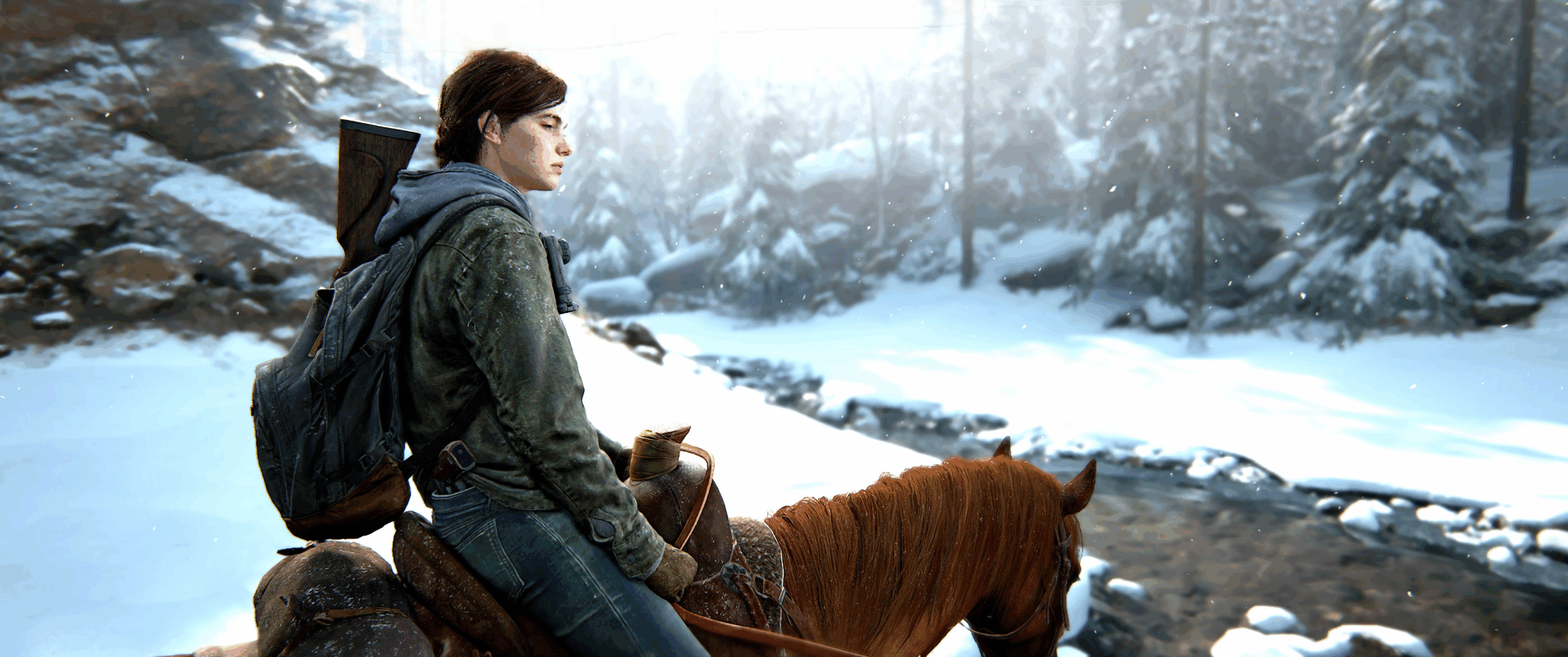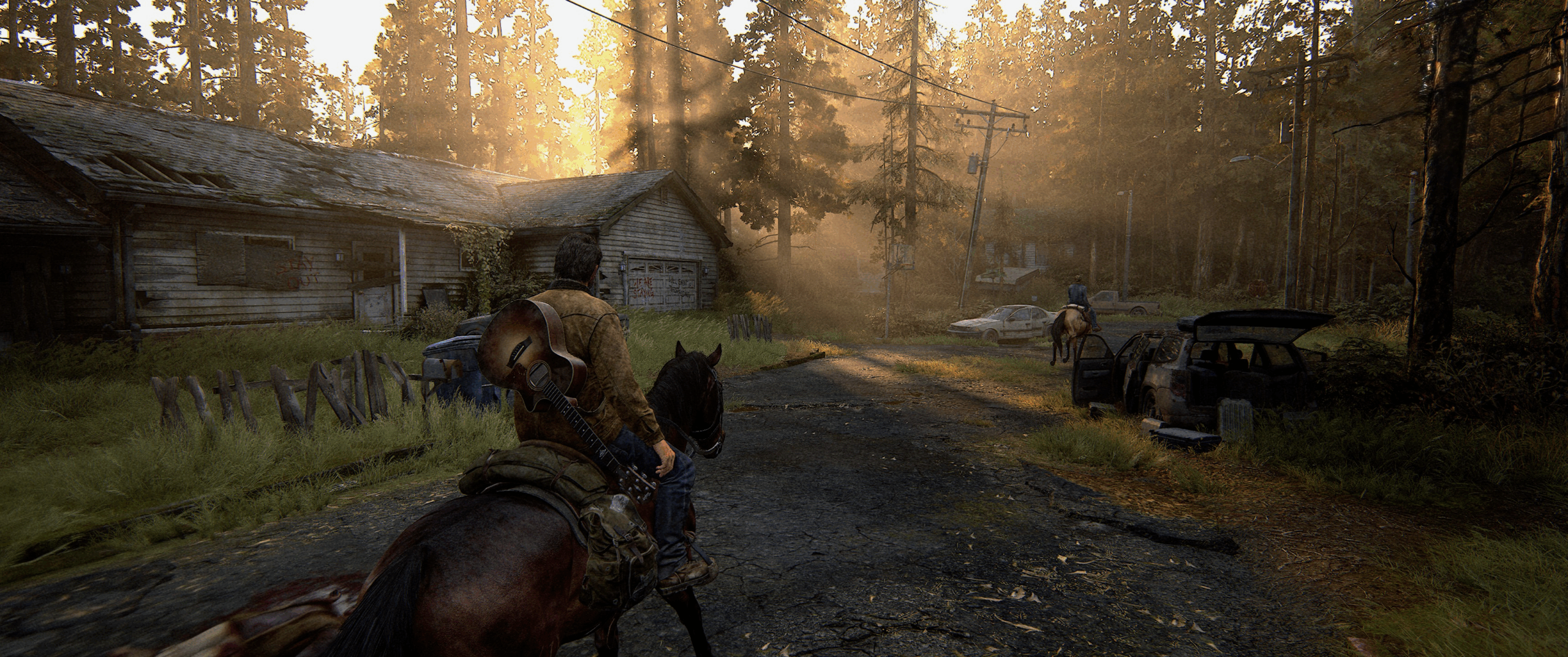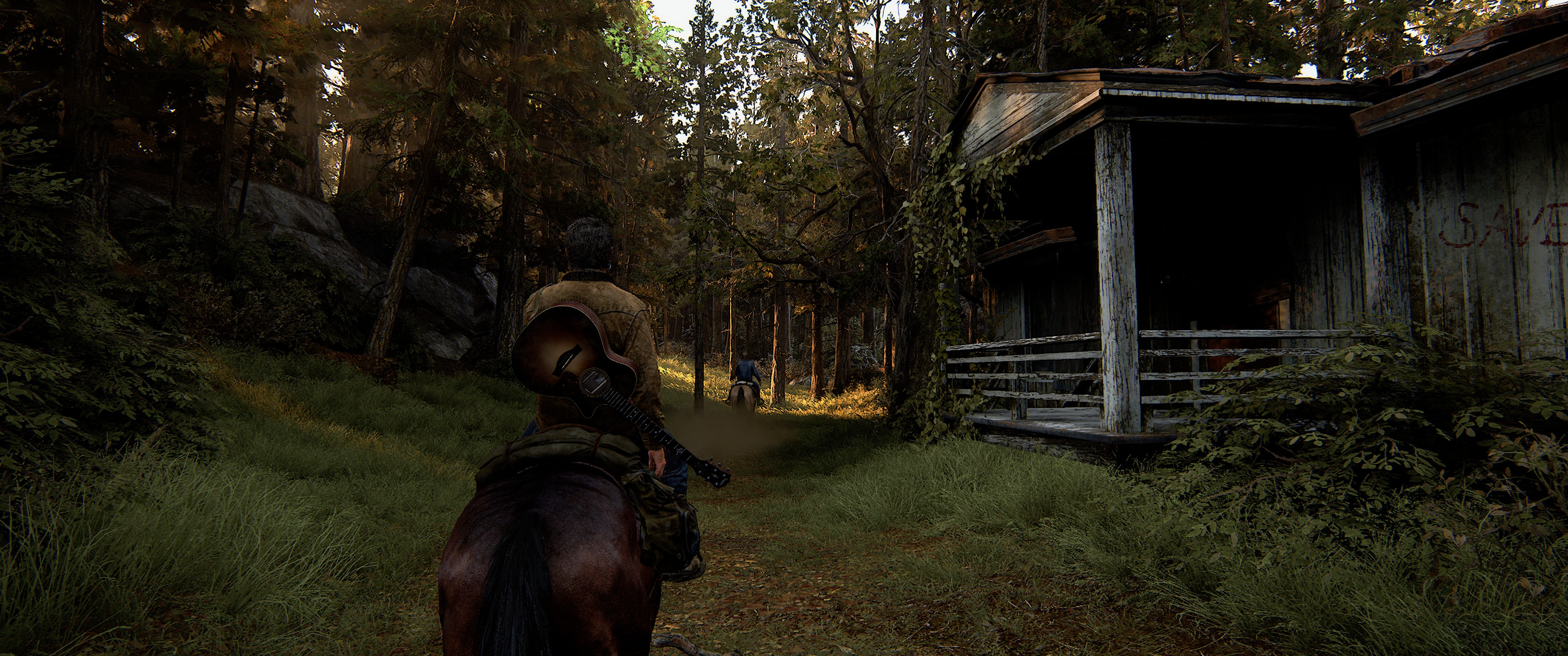In early April, Naughty Dog rolled out The Last of Us Part II Remastered for the PC. It contains performance-enhancing technologies including Nvidia DLSS and AMD FSR 2.1, as well as supports Intel XeSS. In addition to a graphical upgrade, this version contains new features and more.
Earlier this month, Naughty Dog released The Last of Us Part II Remastered for the PC, which, as Part II, continues Ellie and Abby’s story and journey, which we discuss in a blog, here). But, that is only a partial look at this release, as we were overwhelmed (in a negative way) by the story (very dark) and resulting action (brutal killings of humans) that plays out. So, in that piece, you get a rundown of the story action. Here, we deliver more technical details of the title in the following review.

After much anticipation, The Last of Us Part II finally made its way to PC in early 2025, following the remastered PC release of Part I. While the original 2020 version was locked to the PlayStation 4 (and later, a PS5 upgrade), the PC version opens up the game to a broader audience and showcases its technical accomplishments in full glory. The system requirements are steep, however, with Naughty Dog recommending at least an RTX 3070 for 1440p gameplay and DLSS or FSR enabled for smoother performance. CPU requirements lean heavily on multithreaded performance, suggesting at minimum a Ryzen 7 3700X or Intel equivalent.

The game also benefits from expanded graphical settings on PC, including adjustable shadows, ambient occlusion, draw distance, and texture streaming. If you have the hardware for it, this is easily one of the most visually impressive titles on the platform. It supports ultra-wide monitors and unlocked frame rates, providing a much-needed breath of flexibility in how players experience the game.
PC performance and optimization
Surprisingly, The Last of Us Part II runs well on the PC, given the graphical fidelity and cinematic quality it maintains throughout. The game utilizes an updated version of the Naughty Dog engine, which scales across various hardware configurations with ease. Performance is consistent, even in graphically dense areas like the downtown Seattle segments or snowy Jackson sequences.
That said, some players have reported shader compilation stutters on initial playthroughs—a common issue in recent PC ports of PlayStation titles. A patch addressed much of this within the first few weeks, and the game now includes a pre-compilation process on first boot. The optimization effort is commendable; unlike the troubled PC release of Part I, Part II launched in a far more stable state.

The PC version offers a range of graphical settings, including adjustable texture quality, shadow quality, ambient occlusion, and reflections. It supports ultrawide resolutions up to 48:9 for triple-monitor setups, unlocked frame rates, and features like Nvidia DLSS 3 and AMD FSR 4.0 for enhanced performance. The game runs smoothly across various hardware configurations. For instance, at 1440p resolution, the Nvidia GeForce RTX 3070 achieves an average of 85 fps, while the AMD Radeon RX 6700 XT averages around 80 fps. At 4K resolution, the RTX 4080 delivers approximately 95 fps, showcasing the game’s scalability on high-end systems.

While Part I told a more intimate and focused story about Joel and Ellie’s journey and the bond that formed between them, Part II blows the narrative wide open—perhaps to its own detriment. Themes of grief, vengeance, and moral ambiguity are at the core of the experience, but this time with a more fragmented and confrontational structure. Playing as both Ellie and Abby invites the player to question loyalty and justification, but the execution splits audiences: Some feel betrayed by the shift in focus, while others praise the bold attempt at nuance.
The stark tonal shift from Part I’s tragic-yet-hopeful tale to Part II’s spiraling descent into brutality is jarring. It’s more of a character deconstruction than a continuation. The gut-wrenching nature of Joel’s death early on isn’t just a story beat—it’s a catalyst for the entire narrative, pushing characters past their limits until there’s almost nothing left of them.
What’s changed since the first game
Mechanically, not much has shifted between the first and second game, but the refinements are meaningful. Movement feels smoother, animations are more fluid, and stealth gameplay has been enhanced with verticality and dodging mechanics. Ellie can now crawl prone, slip through cracks, and leap over obstacles with more agility than Joel ever had. The game also includes rope physics and interactive environmental puzzles,—while rare—break up the monotony of the violence.

However, if you were hoping for an overhaul or new gameplay paradigm, this isn’t that game. Enemy types are mostly unchanged aside from a few new infected variants. AI is slightly smarter in flanking tactics, but not drastically so. There are no major RPG elements, no significant weapon variety expansions, and progression still revolves around scavenging and crafting. It’s a tighter, more polished version of what came before, for better or worse.
The Last of Us Part II Remastered introduces several new features not present in the original release. The No Return mode offers a rogue-like survival experience with randomized encounters and unlockable characters, adding replayability. Additionally, the Lost Levels provide players with previously cut content, offering insights into the game’s development process. The Guitar Free Play mode allows players to freely play various instruments found in the game, enhancing immersion.
PC release, system requirements
Released on April 3, 2025, The Last of Us Part II Remastered marks the franchise’s debut on the PC, following the earlier release of Part I. This version brings enhanced graphics and performance options tailored for PC gamers.
Minimum requirements:
OS: Windows 10 64-bit (Version 1909 or newer)
CPU: AMD Ryzen 5 1500X or Intel Core i7-4770K
GPU: AMD Radeon RX 470 (4GB) or Nvidia GeForce GTX 970 (4GB)
RAM: 16GB
Storage: 100GB SSD
Recommended requirements:
CPU: AMD Ryzen 5 3600X or Intel Core i7-8700
GPU: AMD Radeon RX 6600 XT (8GB) or Nvidia GeForce RTX 3060 (8GB)
RAM: 16GB
Storage: 100GB SSD
For optimal performance at 4K resolution, a high-end GPU such as the Nvidia GeForce RTX 4080 or AMD Radeon RX 7900 XT is recommended.
Conclusion
The PC release of The Last of Us Part II Remastered delivers a technically polished experience, with extensive graphical options and new content that enriches the original narrative. While the game’s dark themes and intense violence may not appeal to all players, its storytelling, character development, and atmospheric design remain compelling. The addition of new modes and features provides fresh experiences for returning players and newcomers alike.

LIKE WHAT YOU’RE READING? INTRODUCE US TO YOUR FRIENDS AND COLLEAGUES.
This was cross-posted in collaboration with JPR.